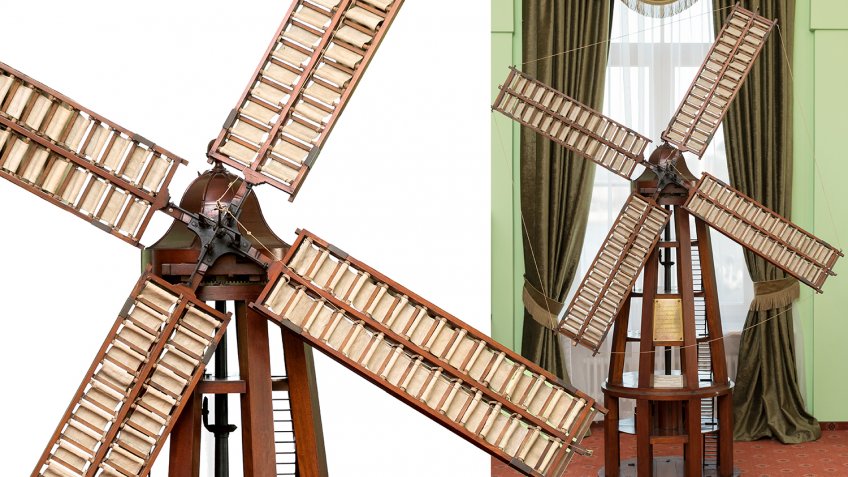
The most well-known reference to windmills dates back to 1604 when the first part of the novel 'The Ingenious Gentleman Don Quixote of La Mancha' was published.
Of course, windmills had been known long before that. In particular, the Spanish already knew of this construction in the XI century. Moreover, the genuine inventor of a windwheel is Hero of Alexandria, a Greco-Egyptian engineer, who lived c. 10 AD – c. 70 AD. How does this machine work, though? And why did it become a symbol of the energy of the future?
The functional design of a windmill has not changed much in the last two thousand years. The wind rotates the bars that keep the gear unit whirling, which in turn pushes a round stone laying on top of another stone, with wheat grains placed between them. This mechanism ensures that wheat is ground into flour.
The Scotsman Matthew Clark, also known as Matvey Clark, came to Russia with his father, George Clark, and Charles Gascoigne. Mr Clark founded the Kirov Plant and the Proletarsky Plant. He is also famous for having designed the metal framework of the Winter Palace; he supervised the construction of Neva, first-ever Russian steamship, as well as the first Russian metal submarine.
The engineer's true passion was, however, model building. In 1822, he presented to Alexander I of Russia a model of a Scottish windmill built from mahogany in the scale of 1:8. This gift turned out to be a sort of an 'energetic prophecy', for sixty-five years later, the world's first wind turbine was established in Scotland. Yet when James Blyth, who designed it, suggested use it for lighting the village of Marykirk, its inhabitants refused the proposal, branding the invention as 'the work of the Devil'.
Wind power generation has as of now become one of the pillars which are forming the world's future energy mix, undoubtedly made up of renewable energy sources. WindEurope informs that last year wind farms generated 48% of all electricity produced in Denmark, 33% of that in Ireland, 27% in Portugal, 26% in Germany, 22% in the UK, 21% in Spain, and 15% in the whole of EU. In 2014, 85 countries used wind power for commercial purposes. As of 2015, over 1,000,000 globally were employed in the wind industry, with 500,000 of them being in China and 138,000 in Germany.
.